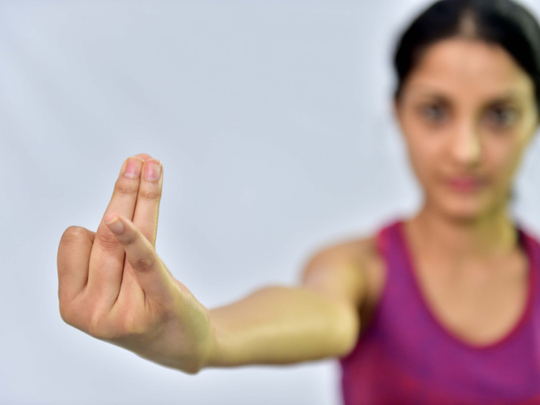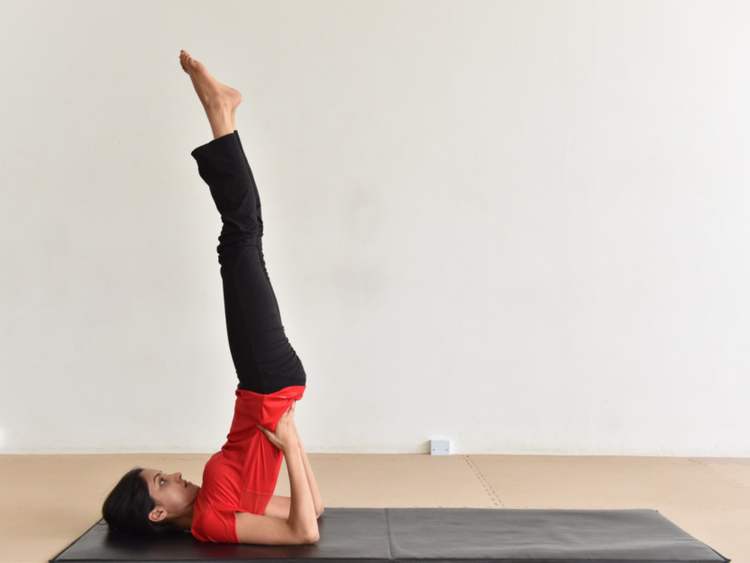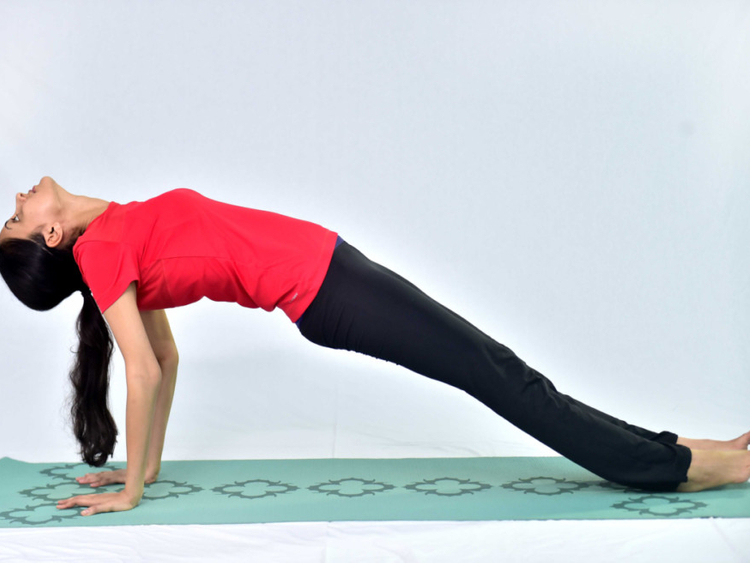
In the previous weeks, I have explained how mudras can work on the body, brain, mind and the energy system. The following are two mudras falling under the category of hasta mudra (hand gesture) and kaya mudra (postural gesture) respectively.
Hridaya Mudra (heart gesture)
Sit in any comfortable meditation posture with the head and spine erect. Place the tips of the index fingers at the root of the thumbs and press the tips of the middle and ring fingers to the tips of the thumbs so they are placed side by side. The little finger remains straight. Place the hands on the knees with the palms facing upward. Close eyes and relax the whole body, keeping it still. This can be practised for 10-20 minutes. Keep the awareness on the breath.
Benefits: This mudra directs the flow of prana (energy) to the heart area and improves vitality of the heart. The middle and ring fingers relate directly to nadis (energy channels) connected with the heart, while the thumb closes the pranic circuit and acts as an energiser, directing the flow of prana from the hands to these nadis. Hridaya mudra is very simple and can be practised by all. It also helps release pent-up emotions since heart is the centre of emotions.
Vipreeta Karni Mudra (Inverted gesture)
This mudra benefits the heart and the brain. Vipreeta karni mudra is a means of enriching the brain and preparing oneself for meditative practices. Here not only the flow of prana but the blood circulation is also reversed towards the brain.
In vipreeta karni mudra, one must be able to maintain the correct position. While practising the posture, inhalation and exhalation is practised in the form of ujjayi pranayama (psychic breathing). Practise this 11 times.
Ujjayi pranayama
During inhalation, gently contract the glottis so that a soft snoring sound – like the breathing of a sleeping baby – is produced in the throat. When this is practised correctly there will be a simultaneous contraction of the abdomen. This happens by itself. Exhale the same way with contraction of glottis. Both inhalation and exhalation should be long, deep and controlled.
With vipreeta karni mudra, one is able to stimulate the pituitary gland, which is located in the higher centre of the brain. From different areas of the pituitary, powerful hormones are secreted which control all the other glands of the body, thereby influencing the functioning of all the organs and systems as well as the mind and emotions.
As emphasised in the previous articles, mudras should be part of a complete yoga routine. They will not benefit or cure any ailment when practised in isolation. These mudras should be learnt under the able guidance of a teacher.
Practice of the week
A couple of postures which can also be practised along with these mudras.
Sethubandasana 1 and 2
Vipreeta karni mudra
Hridaya mudra
Next week: Weight loss – the natural way
— This is an interactive series, in which we bring you practical tips on daily living, inspired by the vision of yoga. Write in to tabloid@gulfnews.com with your questions and doubts regarding enhancing your lifestyle through yoga. For more information, call 800-YOGA (9642) or log on to artisticyoga.com















